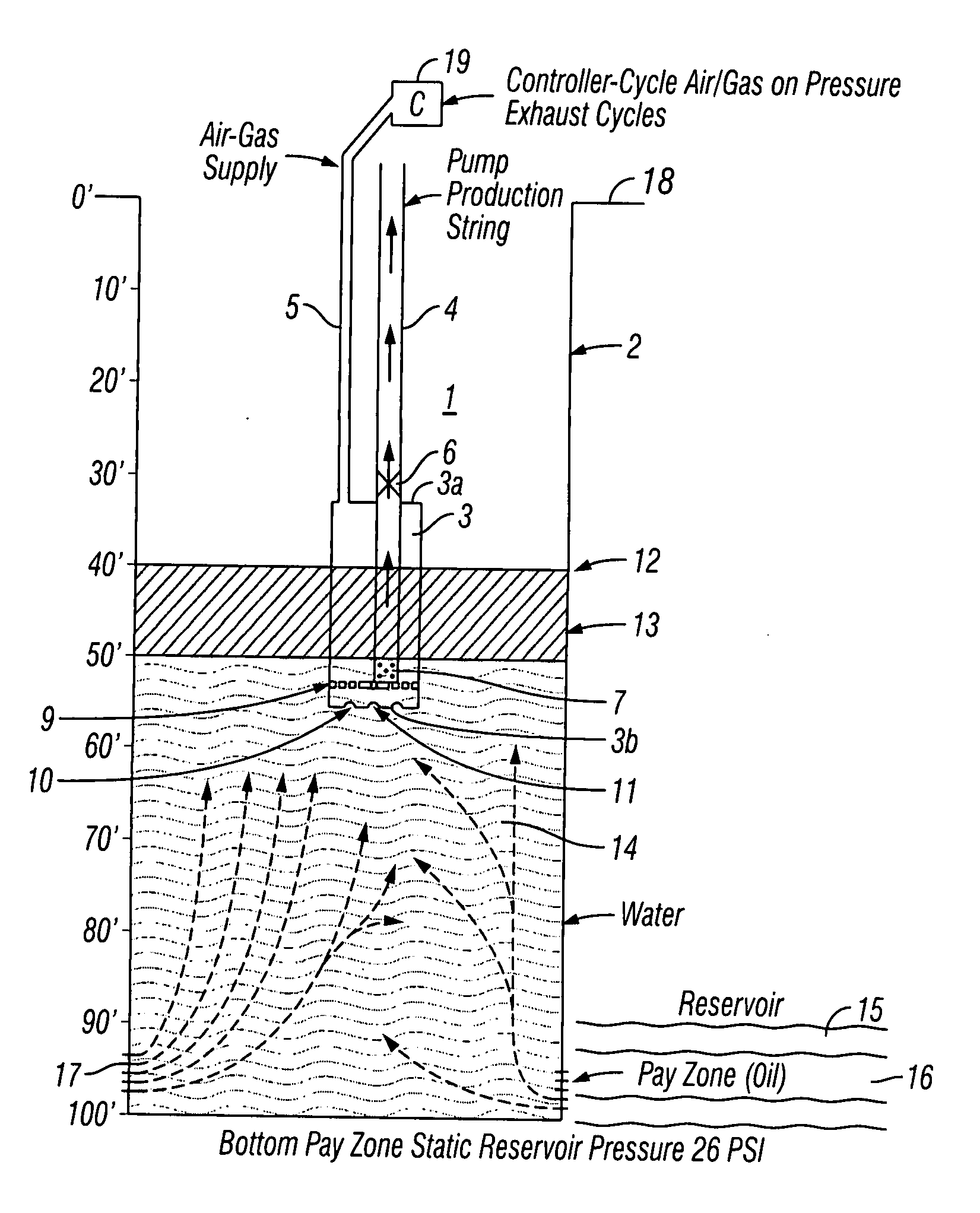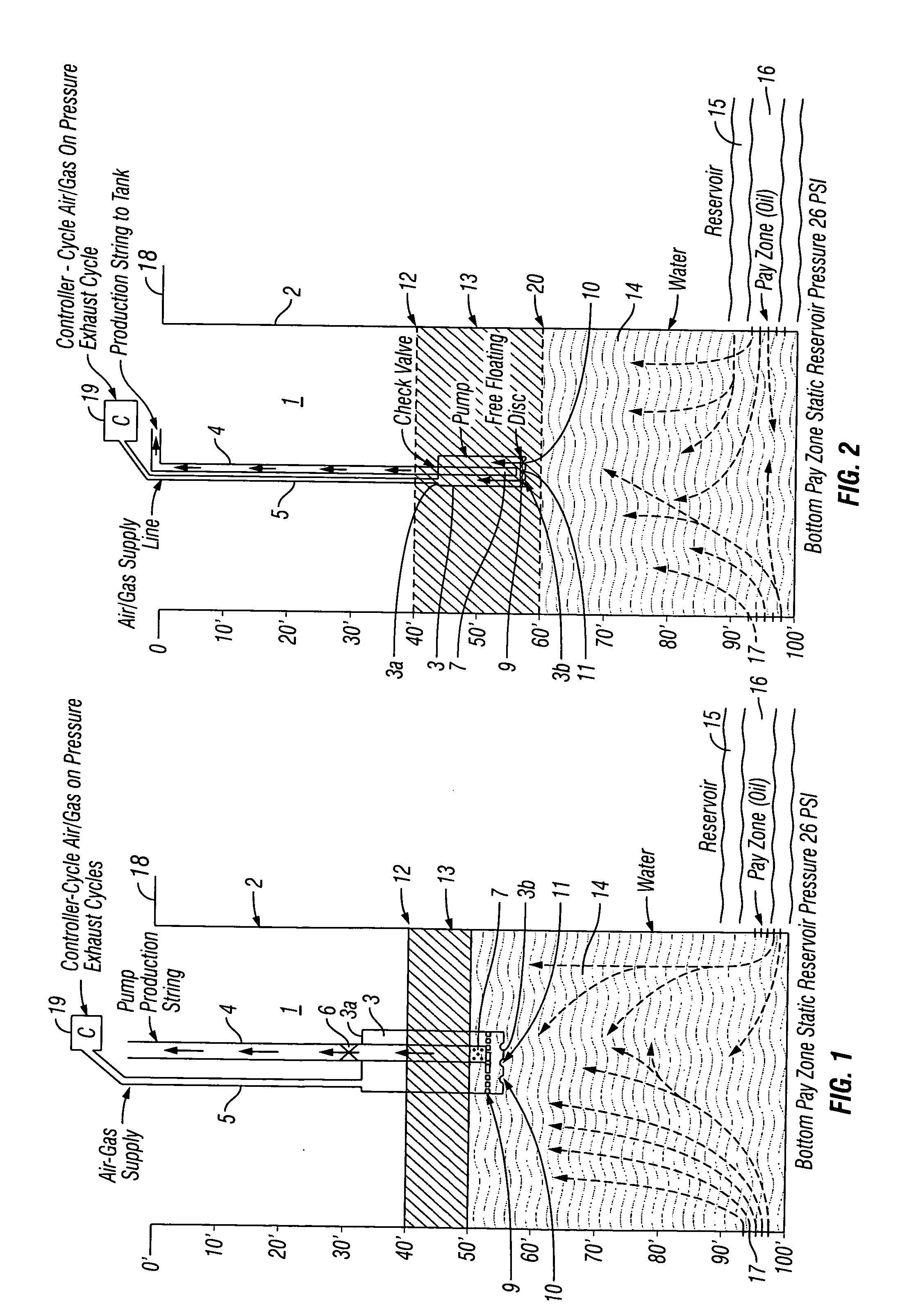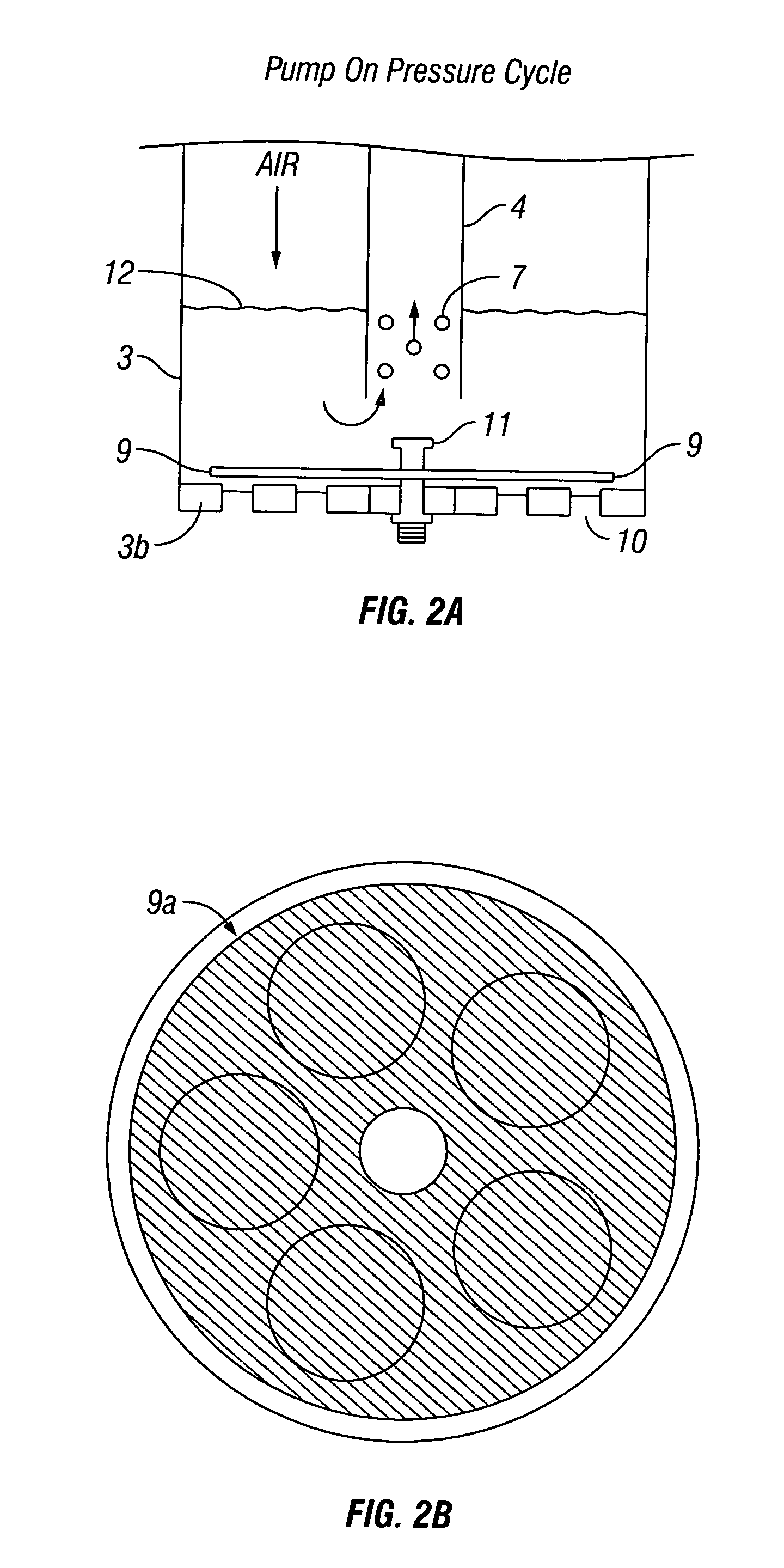Ultra-pumps systems
a technology of ultra-pumps and pumps, which is applied in the direction of functional valve types, separation processes, and well accessories, etc., can solve the problems of large quantities of petroleum origin liquids involved, difficult to recover, and loss of groundwater, so as to reduce water production, maximize oil recovery, and effective use
- Summary
- Abstract
- Description
- Claims
- Application Information
AI Technical Summary
Benefits of technology
Problems solved by technology
Method used
Image
Examples
examples 1-29
[0076]While FIGS. 1 through 5 are drawings / schematics showing the ultra pumping system, the ultra pumping system per se was tested in an oil field in Crook County, Wyo., and are submitted as Examples 1-29. In general, these figures have been briefly described above in conjunction with the general description of the drawings. The diameter size of the pump chamber and the length thereof was predetermined in order to test different sizes and lengths in wells of different depths. The pump chamber diameter size, length and the well depth are shown in Table 1. The air pipe and production string / pipes at the top of the pump chamber were, respectively, connected to flexible poly tubing, and then these were positioned just outside the top cover of the pump chamber. The overall chamber (with the connected poly tubing), was then the lowered into the well and well within the static fluid level (Table 1) which had been measured earlier based upon a “plum-bob” measurement. The initial operation o...
PUM
| Property | Measurement | Unit |
|---|---|---|
| length | aaaaa | aaaaa |
| diameter | aaaaa | aaaaa |
| pressure | aaaaa | aaaaa |
Abstract
Description
Claims
Application Information
 Login to View More
Login to View More - R&D
- Intellectual Property
- Life Sciences
- Materials
- Tech Scout
- Unparalleled Data Quality
- Higher Quality Content
- 60% Fewer Hallucinations
Browse by: Latest US Patents, China's latest patents, Technical Efficacy Thesaurus, Application Domain, Technology Topic, Popular Technical Reports.
© 2025 PatSnap. All rights reserved.Legal|Privacy policy|Modern Slavery Act Transparency Statement|Sitemap|About US| Contact US: help@patsnap.com



